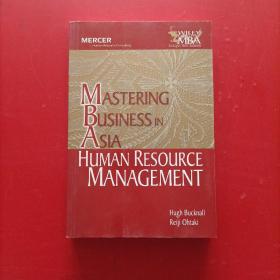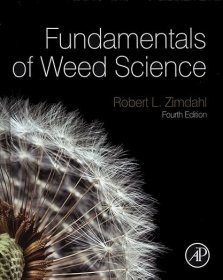
现货Weed Management of Horticultural Crops[9781682511992]
¥ 1434 九五品
仅1件
作者Sharif Ahmed, Muhammad Salim
出版社Intelliz Press LLC
ISBN9781682511992
出版时间2016-01
装帧精装
纸张其他
正文语种英语
上书时间2023-08-08
- 最新上架
商品详情
- 品相描述:九五品
- 商品描述
- Weeds, such as deep-rooted perennials, compete for soil moisture and nutrients in newly planted and mature orchard and berry crops. Weed control is the botanical component of pest control, which attempts to stop weeds, especially noxious or injurious weeds, from competing with domesticated plants and livestock. The text Weed Management of Horticultural Crops provides the fundamental information necessary for the development of weed management strategies for all the major crops using concepts that can be applied worldwide. The objective of first chapter is to evaluate the effect of weed management and seeding rate on weed density, weed biomass, crop yield, and yield components in dry-seeded rice. In second chapter, we explore the potential of using the quantitative self-organizing map (SOM) approach to analyze global weed assemblages. Third chapter discusses how the conspecific crop-weed introgression influences evolution of weedy rice. Fourth chapter describes the technical specifications and configuration of a UAV used to capture remote images for early season site- specific weed management. The objective of fifth chapter is to evaluate the cumulative effects of different fertilizing patterns on weed community biodiversity. Sixth chapter aims to evaluate the potential of oilseed crops planted following soybean, in terms of their ability to inhibit the occurrence of weed species under Brazilian Savannah cropping systems. The objective of seventh chapter is to determine the level of weed control, yield, and net returns of various PRE/POST programs in glyphosate-resistant soybean. In eighth chapter, we discuss on weed management in kidney bean with tank mixes of s-metolachlor, imazethapyr, and linuron. The purpose of ninth chapter is to assess the separate and interaction effects of tillage, fertilizer, and weed control practices. The integration of agronomic practices with herbicides for sustainable weed management has been focused in tenth chapter. The purpose of eleventh chapter is to define and estimate the critical period of weed control for direct-seeded aerobic rice towards developing a less-herbicide-dependent weed management strategy. The objective of twelfth chapter is to discuss the various weed management practices for the control of noxious weeds in major cereal, root and vegetable crops in tropical sustainable agriculture and the strategies used over time to promote their adoption by small farmers. A review on microwave technologies as part of an integrated weed management strategy has been discussed in thirteenth chapter. The implications for horticulture, biofuel production, and biological invasions have been described in fourteenth chapter. Fifteenth chapter discusses how to assess insecticide hazard to bumble bees foraging on flowering weeds in treated lawns. In sixteenth chapter, we deal with stratification requirements for seed dormancy alleviation in a wetland weed. The mechanism of methylated seed oil on enhancing biological efficacy of topramezone on weeds has been discussed in seventeenth chapter. Annual glyphosate treatments alter growth of unaffected bentgrass weeds and plant community compositions have been presented in eighteenth chapter. The aim of last chapter is to discuss fungal novelties from nests of leaf-cutting ants.
相关推荐
-

MANAGEMEN AN INTRODUCTION
八五品周口
¥ 70.00
-

Human Resource Managemen
八五品马鞍山
¥ 130.00
-

Human Resource Managemen
九品北京
¥ 200.00
-

Managemen Information Systems
八五品上海
¥ 100.00
-
![现货Little Weed and Spider Sam[9781524575069]](https://www0.kfzimg.com/sw/kfz-cos/kfzimg/17733071/0dc4c63068b7218b_s.jpg)
现货Little Weed and Spider Sam[9781524575069]
九五品上海
¥ 182.00
-
![现货 Non-Chemical Weed Control[9780128098813]](https://www0.kfzimg.com/sw/kfz-cos/kfzimg/17733071/964f20ee2fcb360c_s.jpg)
现货 Non-Chemical Weed Control[9780128098813]
九五品上海
¥ 422.00
-

现货 杂草科学基础Fundamentals of Weed Science
九五品上海
¥ 385.75
-

MANAGEMEN 2nd EDITION
九品北京
¥ 20.00
-

Public Managemen and Administration
八五品淄博
¥ 90.00
-

weed manual 4673
八五品北京
¥ 88.00
— 没有更多了 —
![现货Weed Management of Horticultural Crops[9781682511992]](https://www0.kfzimg.com/sw/kfz-cos/message/17733071/f8ceb28ef9fab2e2_b.jpg)

![现货Materials and Technologies of Modern Production[9783036401683]](https://www0.kfzimg.com/sw/kfz-cos/kfzimg/17733071/5fd2824531e165d7_s.jpg)
![现货Introduction to Container Ship Operations and Onboard Safety[9781032155425]](https://www0.kfzimg.com/sw/kfz-cos/kfzimg/17733071/58b7ff43ef7909ee_s.jpg)
![现货Electrophosphorescent Materials and Devices[9789814877343]](https://www0.kfzimg.com/sw/kfz-cos/kfzimg/17733071/18cc1d77bcb7b488_s.jpg)
![现货Organic Semiconductors for Optoelectronics[9781119146100]](https://www0.kfzimg.com/sw/kfz-cos/kfzimg/17733071/24c85a750c708964_s.jpg)
![现货Advances in Food Rheology and Its Applications[9780081004319]](https://www0.kfzimg.com/sw/kfz-cos/kfzimg/17733071/e0c11603c9119d4d_s.jpg)
![现货Advanced Materials and Sustainable Technologies[9783035727562]](https://www0.kfzimg.com/sw/kfz-cos/kfzimg/17733071/dced675333874c48_s.jpg)
![现货Advanced Materials and Manufacturing Engineering II[9783035712681]](https://www0.kfzimg.com/sw/kfz-cos/kfzimg/17733071/660ccfae75fa8d3e_s.jpg)
![现货Materials in Machinery and Construction[9783035718119]](https://www0.kfzimg.com/sw/kfz-cos/kfzimg/17733071/6f402060775e9daa_s.jpg)
![现货Cereal Grain Quality (Softcover Reprint of the Original 1st 1996)[9789401071772]](https://www0.kfzimg.com/sw/kfz-cos/kfzimg/17733071/f93ca1c96a97403a_s.jpg)
![现货Weed Management of Horticultural Crops[9781682511992]](/dist/img/error.jpg)


以下为对购买帮助不大的评价